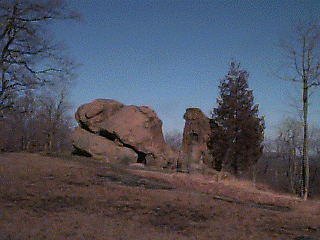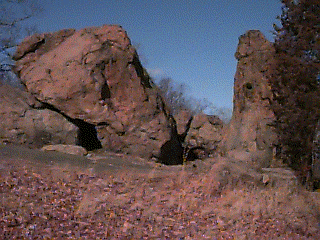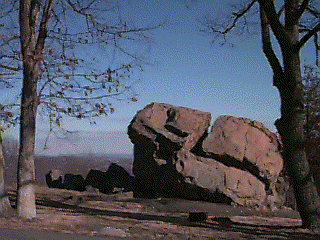

In 1625 Charles I became Kind of England. He believed in the Divine Right of Kings; that is, he believed that a King had full power to rule his kingdom as he wished. Charles I tried to rule England without the help of Parliament. This led to trouble between the leading men of England and the King. The King even raised an army and fought against armies raised by Parliament, but was defeated and brought to trial in the stately old hall of Westminster as a traitor to his country.
In 1649 the seventy-six judges appointed by Parliament sentenced him to death, and fifty-nine of them signed his death warrant. After Charles I was executed, England was ruled in part by Parliament and in part by Cromwell and his son, until 1660, when Charles II, son of Charles I, became King. One of the first things Charles II did was to pardon all who had fought against his father except the judges who had condemned him to death. He issued a proclamation announcing that such of the judges of Charles I as did not, within fourteen days, surrender themselves as prisoners, should receive no pardon. Ten of these judges were executed, nineteen imprisoned for life, twenty-four had died, and a few escaped from the country.
Among those escaping from the country were William Goffe and Edward Whalley, who fled three thousand miles across the ocean to Boston, in July, 1661, and later to Connecticut and the New Haven colony, where they dwelt for a time at the home of Reverend John Davenport. In a few days an order came from England to Governor Endicott of Massachusetts, directing that the regicides be arrested. After a short delay, two officers were sent out for this purpose.
The Massachusetts, Connecticut, and New Haven leaders and people did all they could to protect the regicides and at the same time not anger the officers acting under the King's orders. They treated with courtesy and respect the King's officers who came to arrest the regicides, but were very slow in hunting for the regicides. They found it necessary to call meetings and discuss the matter, or to call the voters and ask their cooperation. Sometimes word was sent ahead that a hunt was to be made for Goffe and Whalley, and so they had time to escape.
In New Haven, Mr. Davenport heard on Saturday that the English officers were coming to arrest the regicides, who were even then staying at his own home. On Sunday, Mr. Davenport preached a sermon from the text, "Hide the outcasts; betray not him that wandereth; let mine outcasts dwell with thee, Moab; be thou a convert to them from the face of the spoiler." People listened solemnly as usual and made not a word of comment nor did they exchange a glance. However, they understood that Mr. Davenport wished them to protect the regicides, and they did so.
When the officers from England arrived in New Haven with warrants for the arrest of th regicides, Goffe and Whalley fled to a mill on the outskirts of the settlement, and later to some rocks by the sea shore. Finally, they found a safe retreat in a cave, since called Judges' Cave, on the top of West Rock near New Haven. A man by the name of Sperry sent food by his children into the woods near the cave each day. This, the regicides secured late each night.
One night as Goffe and Whalley lay asleep in the cave, they were suddenly awakened by a terrible cry. A panther stood at the mouth of the cave and looked at them with eyes that seemed to blaze in the darkness. The two men fled for their lives to the home of Mr. Sperry who had supplied them with food.
After that they dwelt in Milford for three years where they stayed indoors. When the King's officers heard of their location, Milford was no longer a safe place. Goffe and Whalley then went away, travelling by night, to the frontier village of Hadley, in Massachusetts.
At that time, Hadley was on of the most remote settlements, far removed, in the wilderness, and lonely. Here they lived in the home of Reverend John Russell safely for the rest of their days. They lived in a secret chamber of the house and dared not wander out on the streets or in the fields.


